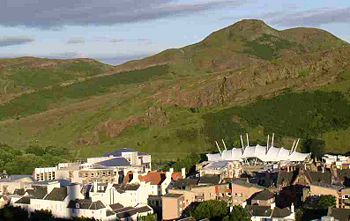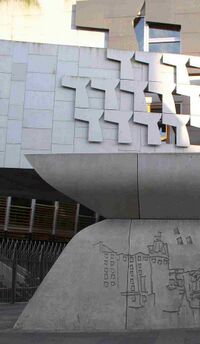Scottish Parliament
When the Scotland Act 1998 was passed by the Parliament of the United Kingdom, it led to the establishment of the first Scottish Parliament since 1707. The presiding officer opening its first session described it as a restoration of the pre-Union Parliament, but the Act does not do so. The first members of the new Parliament were elected in 1999.
Act of Devolution
The Scottish Parliament and Scottish Executive were created by the Scotland Act 1998. These bodies have control and legislative authority over many aspects of Scottish Politics including Health and Education. Control over foreign affairs, military, broadcasting, and fiscal matters such as tax, among other things as set out in the Scotland Act 1998, remain with the UK government and parliament. The Scottish Parliament has some power to vary income tax, but so far has not exercised this power. The legislation enacted by the Scottish Parliament have seen a divergence in the provision of public services compared with the rest of the UK. For example, the costs of a university education, and care services for the elderly are free at point of use in Scotland, while fees are paid in the rest of the UK.
The Scottish Parliament is a unicameral legislature of 129 Members. Members are elected in two ways: 73 individual constituencies each elect a single member using a "first past the post" system and another 56 members are elected by eight electoral regions by an "additional member" system. The Scottish Parliament was first elected on the 6th May 1999. The parliament serves for a five-year period,[1], after which new elections are held. There is no limit on members standing for re-election.
The Scottish Executive, the executive arm of government, is led by the First Minister, who appoints its members. The First Minister is elected by the entire Parliament; for example, on 16 May 2007, MSPs voted by 49 to 46 for the Scottish National Party (SNP)'s Alex Salmond to replace Labour's Jack McConnell as First Minister. From 2007 until 2011, the pro-independence SNP ran Scotland as a minority administration with issue-by-issue support from the Green Party's two MSPs. In 2011, the party gained a majority, but following a referendum on independence which resulted in a vote to remain in the UK, Alex Salmond stepped down as First Minister, to be replaced by Nicola Sturgeon. In May 2016, the SNP were returned as another minority government, and the Conservatives overtook Labour as the main opposition party. The Liberal Democrats maintained their position, as the smallest party.
The SNP informally renamed the Scottish Executive the 'Scottish Government' in September 2007, changing letter headings, publicity material and signs in and around the Parliament building accordingly. However, this change has no legal standing, and legislation continues to refer to the Scottish Executive.[2]
New Parliament Building
- "Then let us pray that come it may
- (As come it will for a' that)
- That Sense and Worth, o'er a' the earth,
- Shall bear the gree, an' a' that.
- For a' that, an' a' that,
- It's coming yet for a' that,
- That Man to Man the world o'er,
- Shall brithers be for a' that.
- quotation from "A Man's A Man for A' That" by
Robert Burns (1759-1796), inscribed on the wall of the new Parliament building
In 1999, the first Parliament met at the Assembly Hall at the top of The Mound, in the centre of Edinburgh. However, a new building was deemed necessary, and the chosen site was in Holyrood, opposite to the Royal Palace of Holyroodhouse but in an otherwise relatively depressed area of the city. The design for the new building was opened to competition, and the competition was won by a team led by Spanish architect Enric Miralles. Inspired by the surrounding landscape, the flower paintings of Charles Rennie Mackintosh and "upturned boats on the seashore", Miralles developed a design that he said was a building "growing out of the land".[3] Over the course of the project, costs escalated from an initial estimate of £40 million to a final cost of over £420 million, an increase that did not altogether escape comment. The building has won many architectural awards, and attracts strong opinions for and against.[4] The interior is generally thought well of, and viewed from above it is spectacular, but many dislike the exterior appearance from ground level. That appearance that is not markedly embellished by the concrete bollards and large concrete, blast-proof walls that were a late addition to parts of the building, prompted by fears of terrorist attacks.
- "There is hope in honest error; None in the icy perfections of the mere stylist"
- Charles Rennie Mackintosh (1868-1928), quoted on the wall of the New Parliament Building
Footnotes
- ↑ Four until the lifetime of parliament was extended in 2016: see Scottish Elections (Dates) Act 2016.
- ↑ BBC News: 'Scottish Executive renames itself', 3rd September 2007.
- ↑ Scottish Parliament website
- ↑ "Every day that passes reveals some new and unexpected detail of Miralles's posthumous masterpiece. Here, an extraordinary courtyard, there, a wall with windows like you have never seen before. It is hard to make sense of such an original design." The Guardian.

